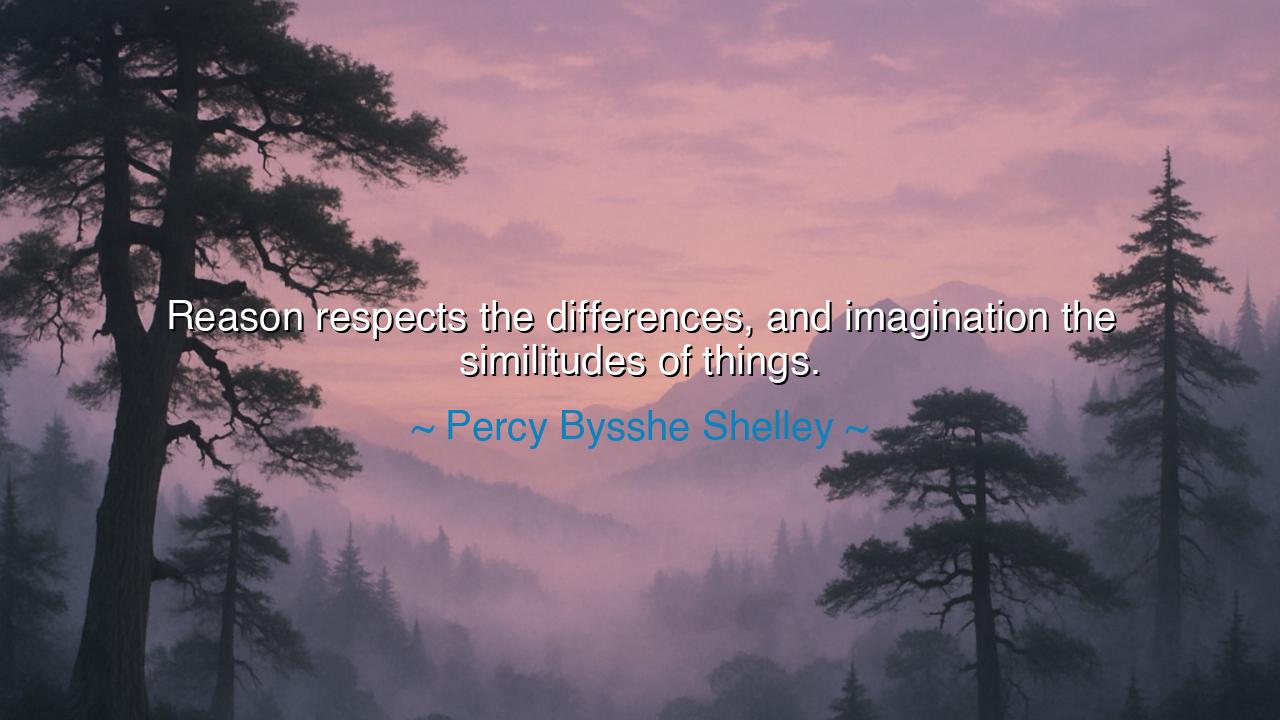
Reason respects the differences, and imagination the similitudes






When Percy Bysshe Shelley wrote, “Reason respects the differences, and imagination the similitudes of things,” he captured in a single sentence the eternal dance between mind and spirit, between the intellect that divides and the vision that unites. These words, born from the fire of the Romantic age, remind us that the human soul is not made whole by knowledge alone, nor by feeling alone, but by the harmony of both. Reason is the eye that sees distinction—the boundary between one thing and another—while imagination is the heart that perceives the hidden thread that binds all things together.
In this teaching, Shelley speaks not only as a poet but as a philosopher of the soul. The reasoning mind is analytical—it seeks to understand by separation. It discerns, categorizes, measures, and defines. By this faculty, man builds science, law, and order. But the imaginative spirit works otherwise—it sees likeness where reason sees division. It is the bridge-builder between worlds, the dreamer who perceives the unity behind diversity, the cosmic pattern beneath the scattered forms of creation. Both are necessary, for without reason we are lost in illusion, and without imagination, we are blind to beauty and meaning.
Shelley, child of the Romantic era, wrote in a time when reason had ascended to a throne of dominance. The Enlightenment had exalted logic and science as the supreme paths to truth. But Shelley and his fellow poets—Keats, Blake, and Wordsworth—rose like prophets to remind the world that truth without imagination becomes a desert of mechanism, cold and unfeeling. They saw that while reason dissects the flower to understand its parts, imagination beholds its living spirit, the pulse of life that reason alone cannot grasp. Thus, Shelley’s words are both a balance and a rebellion—a call to honor both faculties, each in its rightful place.
To understand his meaning, consider the story of Isaac Newton and William Blake. Newton, the great master of reason, revealed the laws of gravity and motion—he saw how the planets move and why the apple falls. But to Blake, the mystic artist, Newton’s vision was too narrow. “He sees not through the eye but with it,” Blake said, meaning that Newton saw the mechanics of the universe but not its soul. Newton beheld the differences; Blake sought the similitudes—the divine light that connects the atom to the star. And yet, both men were seekers of truth. The one revealed the order of creation; the other its wonder. Together, they form the complete vision of human understanding.
For reason teaches us to respect the boundaries of all things—the line between self and other, truth and falsehood, right and wrong. It keeps us steady, rooted in discernment. But imagination dissolves those boundaries, allowing us to feel the kinship of all existence. It is imagination that lets the poet feel the sorrow of a






AAdministratorAdministrator
Welcome, honored guests. Please leave a comment, we will respond soon